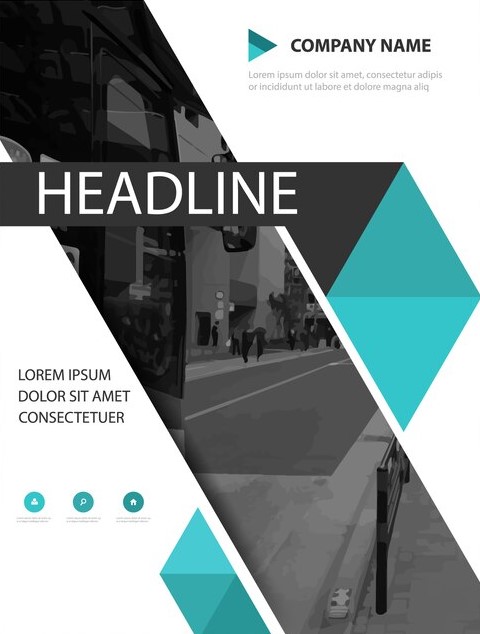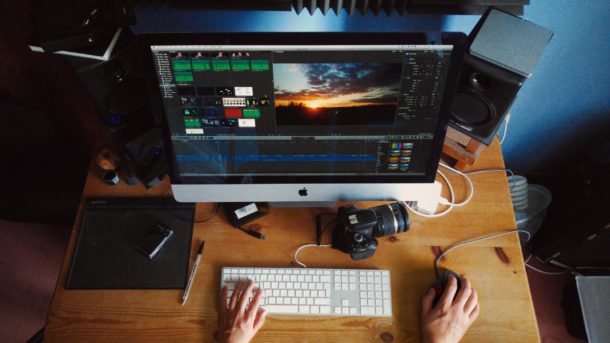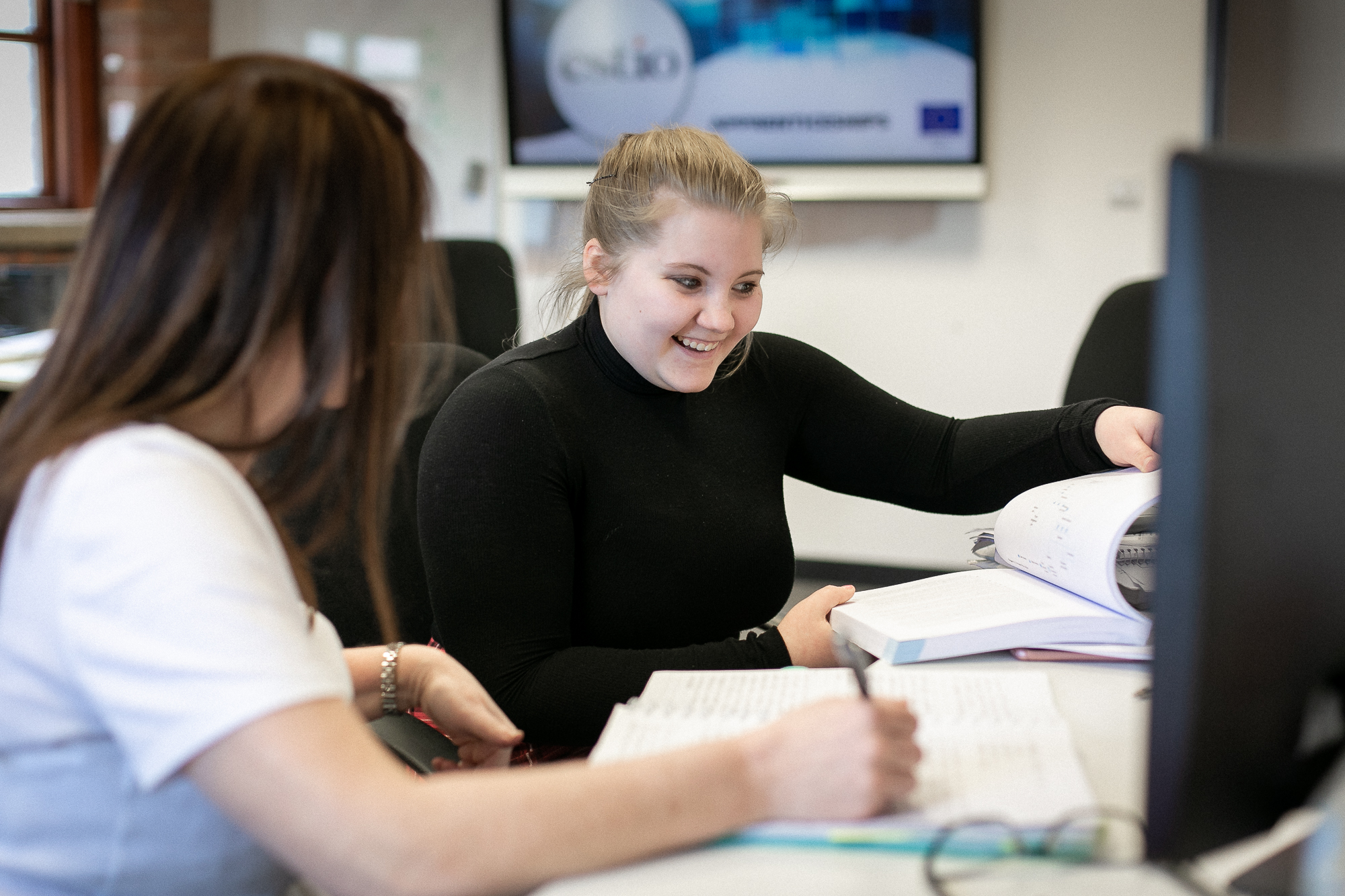Format & Structure
After deciding what your Portfolio piece will be about, what the content will be (using the STAR model), and starting to plan the production of your piece, it is time to start looking at how you will present it in a format which works best for you and your Assessor.
Your Portfolio, overall, can be produced using a wide range of formats and ‘presentation’ styles. A single Portfolio could contain multiple different types of format to ensure that each piece is able to get the best impact for the Assessor.
Some learners like to use documents and reports as their main format for presenting their information, but this may not work for everyone. It may, also, not be the best way to deliver content for a specific Portfolio piece.
As every Portfolio is different, there is no right or wrong decision on how to do this. It should always be a discussion between you and your trainer, as the trainer will know how to best support you. To help, however, there are examples of different formats in this section.
Report and Essay

The most popular form of Portfolio format is the report, or essay, style. This is common as technical people (especially those often taking IT & Digital courses) have a writing style which prefers the report style. Essays are second in style and only differ as they are more informal, read more like a single piece of text (without headers and titles) and more resemble a story.#
When it comes to a complete Portfolio, it is prefectly fine to include report-style pieces of work. They offer a number of positives, such as 1) easy to follow, 2) a well known format, 3) can be detailed, and 4) they provide a single file with everything contained.
Although a report is great for including images, tables, charts and diagrams, it does miss-out on being (more easily) able to support videos and audio evidence pieces. This can be done, using the Insert Object feature however.
When producing a Portfolio piece in this style, it is very easy to produce a piece of work which can contain in excess of 5,000 words. As a result, if you have a large Portfolio, for example the Level 4 Business Administration standard requires 10 or more Portfolio pieces, this can result in a very large and excessive finished Portfolio.
For guidance and tips on writing a report style Portfolio piece, look further down the page to see what we recommend you include to make sure it is the most well-presented piece of Portfolio work.
Presentation
The second most popular Portfolio piece presentation format is an actual presentation. A presentation does, mostly, exactly what a report style piece does, but it can provide a more interactive and engaging experience for the read/ Assessor. The challenge with a presentation format, and it can be a major thing to overcome, is that there is always less text on the screen/ slide. This means that the clarity and detail comes from the learner in the form of a voice-over, or the recording of a presentation being given; as if delivering it to the Assessor themselves.
One of the main advantages of the presentation format, is that it can provide a wider variety of evidence inclusion. Videos, audio files, images, diagrams, animations, and more can be shown to the viewer without relying on them to ‘click here’ or have the right software and codec installed. The flip side of this, is that learners do not often like giving the presentation. As a result, they submit a slide deck/ presentation which relies heavily on the slide content (i.e. limited text and supporting evidence) but this can lead to the Assessor not getting the fullest understanding of the content and the experience that the learner has gone through.
Mixing up Portfolio formats between reports and presentations can help you support your Assessor to be engaged and not miss anything. Get some pointers on how to make the most of the presentation style Portfolio piece, further down the page.

Video

Another format which can work well for your Portfolio piece is video. This is definitely a great one for supporting evidence, and you can learn more in the Gathering Evidence section, but it can also be powerful as a Portfolio piece in its own right. It does need to be selected for the right piece of work and the right planning needs to be done to make this a strong piece of Portfolio work.
A video piece is very strong as it captures, and shows the Assessor, you actually doing the task you talk about. Nothing is more powerful than the Assessor actually witnessing you doing the workplace task and activity; whatever that is.
One set of apprenticeships that videos work well in, are the digital media and marketing standards. On these courses, the video has two roles as a Portfolio format. 1) It captures and shows you doing something; whether that been screen recording or third party view (over the shoulder) style recording, and 2) you get to show off some of your video editing skills too. Again, the Assessor gets to see some skills which (could) map to competencies and be mapped as demonstrated as a result.
If you want to consider using a video as a Portfolio piece format, keep reading more hints and tips around good practice and making the most of it.
Structuring your Portfolio Piece
After identifying the ‘focus’ for a Portfolio piece, thinking about the content and adding depth and detail through the STAR Model, you will have a strong springboard for beginning the work. Once this is all done, you then need to select the format (i.e. report, essay, presentation, etc) which you will be using for your piece so that you can start to produce your Portfolio piece in a format which works best for you, your content and the Assessor. Now, you can start to put everything together.
Sometimes, the hardest steps of starting an actual Portfolio piece, are the decisions around creating the product itself; colour scheme, components, etc. This section is here to help make this easier, and give you some guidance (around the components and through the Do’s and Don’ts) which will help make the entire process easier.
One of the first things you can do to make the process easier, is by getting a copy of your employer’s template for the format you have selected. This should include the colour scheme, layout, and more for you already; meaning you do not need to make those decisions. It is also nice, using the template, as it shows the Assessor that you see yourself as part of the company you work for.
Starting with the front cover, you need to give your Assessor an impression of your commitment to attention to detail and professional content production. This then leads on to a contents page where the Assessor can, very quickly, see how you have structured the story and content within your Portfolio work. The use of a contents page is also great as it allows the Assessor to see (at very high level) what you have done.
After the contents page comes the main body of your piece. This will be where you cover the Start, Middle, and End of your work as discussed in the STAR & Story section of the site. The main body will also include all of your supporting evidence to back-up and demonstrate what you have talked about within your content.
Throughout your Portfolio piece, you may find that you refer to workplace documents, materials from third parties (i.e. manufacturers, etc) or other organisations such as professional bodies or training materials. If you do this, it is expected that you will include references so that your Assessor can see you are using other people’s work and NOT claiming it as your own. This can be done using the Harvard Referencing system. Check out the Writing Skills & Styles section for more about this. Including these references will continue your Assessor’s awareness of you being professional in your work and applying attention to detail throughout.
The final element to consider is the use of Appendices. These are ‘attachments’ in your work that don’t form part of the main content, but are referred to as additional content. They sit at the back of your work and help the reader to get a bigger understanding from your content. Things that work really well as appendices are documents, large chunks of content, and other things which would detract from the story if they are included as part of the main body. You can see more about these in the Writing Skills & Styles section.
Front Page
When your Assessor opens a Portfolio piece, you want them to be impressed by your attention to detail and presentation. Including a front page in your Portfolio piece is important; whether you are producing a written, presentation or video Portfolio piece of work.
Your front cover should include: 1) your company logo, 2) the name of your employer, 3) your name, 4) your job title, and 5) a title for the piece.
This might seem an obvious thing to include, but it shows the Assessor that you care about presentation and detail; something which can additionally support your professionalism; especially if this is consistant across all your Portfolio pieces.
Contents Page/ Coming Up
Some Portfolio pieces can be extensive and lengthy in detail and content. Including a contents page allows the Assessor to easily see an overview of the content and items you have included. It also allows them, after reading, to know where to go should they need to refresh themselves of some information whilst preparing for your Professional Discussion.
Main Body
Everything related ot the telling of your story, using the STAR Model, should be in here. This includes your content (story), images, audio, video (supporting evidence), and any references to appendices and additional information. This is the bit that your Assessor will be using to inform the questions which they will ask as part of your Professional Discussion in your EPA (End Point Assessment).
Supporting Evidence
The content in your Portfolio work is very importance to demonstrate that you have understood the knowledge and applied it to the workplace and your activities there. The content explains what you did, how you did it, and with whom you did it – as outlined in the STAR & Story section. Your supporting evidence shows the Assessor that you actually did this, and allows you to expand on the content to support the ‘say it, show it’ aspect of your Portfolio pieces.
Referencing/ Recognising Sources
If you use sources of information from third parties, websites and other locations, it is expected that you will reference these within your work; maybe as an appendix. For example, if you have solved a coding problem whilst writing a Java program and using SQL by using an online support site, you should reference that you did this and where you sourced the information. This allows the Assessor to see you can perform tasks such as researching information, as well as knowing that you recognise the source in your referencing.
This is something that is often missed, but it is well worth doing this to add more professionalism to your Portfolio pieces.
Appendices and Additional Information
Appendices are not always used within every Portfolio piece, but they can be useful when including lots of information which could distract from your content if you include it in the main body of the piece. Examples of good appendices include workplace policies and procedures, knowledge articles which you have used within a workplace task, or larger pieces of text which you have extracted from within the main body.
The purpose of the appendix is to allow you to include this content and evidence, in an area which is additional to the Portfolio piece. This is something which is likely to become more important in the Project element of your EPA (End Point Assessment) so if you can get some practice in this early (using your Portfolio) then it will help you later on.
Hints & Tips for Best Practice
Do’s
There are many hints and tips which can help you with your Portfoliom its production, and its impact on the Assessor. These sit as things you should, and things you should not do. Check out the hints (Do’s and Don’ts) to get some advice on how to approach your Portfolio piece development
Don’ts
Plan your Portfolio Piece
Planning is one of the most important starting elements of your Portfolio as it allows you to have a good plan and consider what needs to be done. If you plan a Portfolio piece around an up-coming workplace project, you can then identify what evidence you will need to collect as you go through the actual task. This is easier, in the long run, than trying to produce a Portfolio piece retrospectively. Your planning should start with a look at the workplace task you will do and map it against the STAR Model.
Use your Company Template
Save yourself time and decisions about how your Portfolio piece will look by using your organisation’s templates. This gives you the structure, colour scheme and initial setup for the piece and reduces the decisions you need to make an an early stage.
Use a Structure (Report)
When producing a report style Portfolio piece, think about the logical ‘list’ of sections in your report and use headings and a structure. This will help you deliver your story in a chronoligcal and process based approach and structure.
Use a Structure (Presentation, etc)
If you are doing a presentation or video style format, think about how you can use slides, or screens, as headers and provide structure to your piece. Having headers, and sections, in presentations is a great way of splitting everything out in a sensible structure; you could even include a menu section at the start. In a video, using chapters and a menu might help.
Explain Your Decisions and Actions
Make sure you always explain why you have done something so that the Assessor can understand your reaons and justifications. This shows the Assessor that you are considering your actions and decisions before making them – something which shows professionalism, calmness and justified actions.
Say It, Show It
If you have said “I did…” then make sure you back this up with some form of supporting evidence and detail. The Assessor wants to see what you have done and see the evidence to show it. This is very important in areas such as communications (i.e. emails, etc) as you need to include a screenshot of the email you sent. If you are delivering at a team meeting, record it (audio or video) as you can embed this and use it to show your skills and abilities. If you say you have done something then you must evidence it.
Follow the STAR Model
Your Assessor is trained in looking at your Portfolio, and EPA assessments, for the information and detail using the STAR Model. As a result, we want to provide the the information and content in a way that makes it as easy as possible for them to find what they need. As a result, make sure you use the STAR Model.
Complete your Mapping Document
As you progress with your Portfolio you will need to complete a Mapping Document. This will be submitted, alongside your Portfolio, so that the Assessor can see where each of the mapped competencies, KSBS, are covered within your Portfolio pieces. If you leave this document until the end, it can be annoying to complete and can take longer than you would like it to. By completing your Mapping Document as you complete your Portfolio pieces you will get two benefits from it: 1) Saving you time as you prepare to go in to EPA, and 2) You can identify the gaps within your KSB coverage – allowing you to add these in, where possible, to strengthen your overall coverage of the competencies.
Link Everything Back to Real World Work Activities
One of the most important aspects of your Portfolio, is the relationship between your knowledge and your ability to use this knowledge in the skills and behaviours which form your kob role. As such, your Portfolio needs to include lots and lots of real-world, workplace, evidence which demonstrates your application of knowledge in the job. The Assessor does not want to simply see that you know stuff, but to see that you can apply that knowledge. For example, if you know about legislation which affects data analysis, don’t just talk about the legislation – relate it to the work you are doing and explain how it impacts that work and how you operate to be compliant with it. This is what the Assessor is hoping for.
"I", Not "We"
You may work on a project or task as part of a team, but the Assessor will only consider what you did in that work when they prepare for your Professional Discussion. It is absolutely fine to set the scene by explain what you were doing, who you worked with and how you communicated and worked teogether. When writing about the work itself, however, make sure you explain what you did. The Assessor is not fussed about your colleagues work as they cannot attribute this to you. So remember “I…..” and not “We…..”
External Links
When you are producing your Portfolio pieces, you may want to reference or show some work you have done that includes online content and resources. To do this, you will need to include the content within the Portfolio piece itself and not include a link to that external resource. The Assessor will not look at any external resources or content that is not included, or embedded, within the submission piece itself. This is because online resources can be changed once the link is submitted, and this is not acceptable within the assessment regulations. If you are unsure about embedding evidence within your Portfolio piece, have a chat with your trainer and they can help you.
Make Assumptions
When someone has become experienced in a job role, it is easy to start assuming that another person already knows, or understands, what you are talking about. This is a risk within the Portfolio too. Although your Assessor does understand, and has experience, in your industry they do not know or understand your job and the specific work you do. As a result, you need to make sure you explain everything clearly and in detail that means they can get the best possible picture and understanding. This may take more time to ensure you are not assuming they understand, but it is worth it and important to do so.
Reference KSBs and Competencies
When working with your trainer to develop a Portfolio piece, they may suggest you focus on, or target, specific KSBs to strengthen them and add detail. This is fine as it is constructive feedback. When working on your Portfolio, however, do not include references to which KSBs you are targetting. It is highly possible that the Assessor will see that as ‘self assessment’ and you need to avoid this within the work.
If you are including references to help you structure and manage the develpment of your piece, then that is okay – as long as you remove the references before submitting the piece. It is recommended that you include these references in the ‘comments’ on your work as these can easily be deleted so that we can be sure the Assessor does not see this.
Explain Theory without Giving Work Demonstration
Think back to ‘Say it, show it’!
If you say you have done something, make sure you give a workplace example of it so that the Assessor can see that you really have done it.
Leave Comments or Feedback
When your completed Portfolio is sent to the Assessor, all comments and feedback must be deleted and removed. This is important as the Assessor only wants to see your work, and not the comments and feedback which you have had to help you get to that finished piece.
Blag It
If you are struggling to cover a competency in detail at any point, or don’t think you have sufficient detail or depth, do not blag it or make stuff up. Your Assessor will see straight through this.
If you are unsure about something, include what you can. and talk to your trainer. You may feel that something is not sufficient, but your trainer may say otherwise.
Size & Focus
Every standard has a different ‘size’ for its Portfolio. The ‘focus’ for a piece is agreed between yourself, your employer and your trainer. Look at how to lead on this part of the process
STAR & Story
Everybody likes a story, and putting your Portfolio work in the best possible format – using STAR – helps you to get the best version across to the Assessor in a content-rich delivery
Format & Structure
Portfolio pieces can be presented and formatted in any approach that is suitable for you. See what this means and how you can make your Portfolio even more personal
Gathering Evidence
Evidence can come in many forms and is key to supporting your Portfolio content. Investigate how you can gather ‘real-time’ evidence and how to make the most of it
Writing Skills & Styles
You have your focus, your evidence, and your structure. How can you make the most of your writing to make sure you get the Portfolio you want? Have a look here

